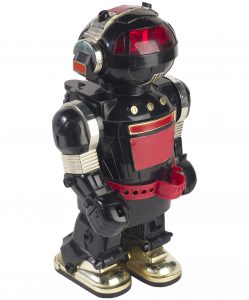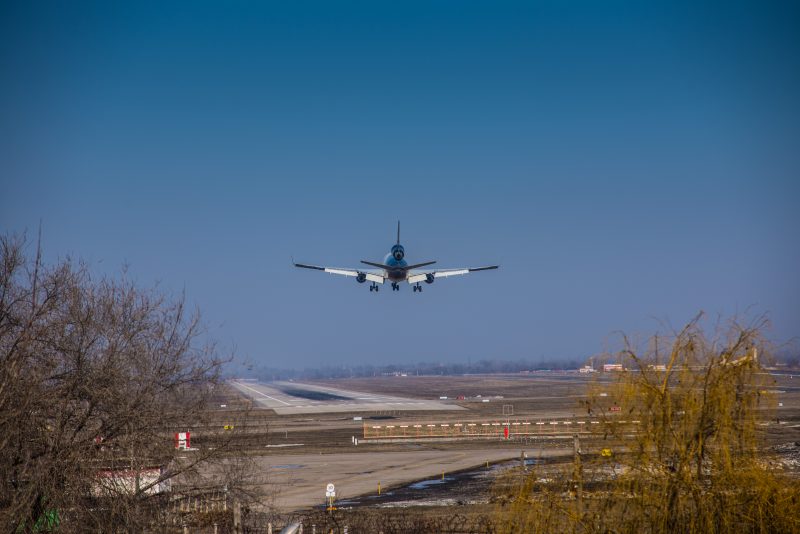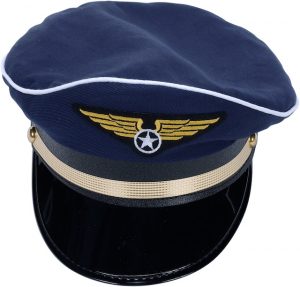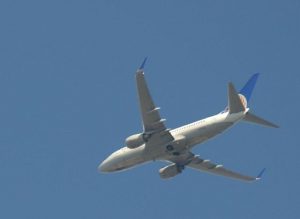Understanding Hydraulic Systems In Jet-Powered Planes
 Hydraulic systems are a crucial component of jet-powered planes, playing a vital role in ensuring their functionality, safety, and efficiency. These systems are responsible for operating various flight control surfaces, landing gear, brakes, and other essential mechanisms. This comprehensive guide delves into the intricacies of hydraulic systems used in jet-powered planes, exploring their components, functions, and significance in modern aviation.
Hydraulic systems are a crucial component of jet-powered planes, playing a vital role in ensuring their functionality, safety, and efficiency. These systems are responsible for operating various flight control surfaces, landing gear, brakes, and other essential mechanisms. This comprehensive guide delves into the intricacies of hydraulic systems used in jet-powered planes, exploring their components, functions, and significance in modern aviation.
Basics of hydraulic systems
Hydraulic systems in jet-powered planes utilize fluid power to transmit force. By using an incompressible fluid, typically a special type of hydraulic oil, these systems can efficiently and reliably convert energy into mechanical movement.
Key principles of hydraulics
- Pascal’s law: The foundational principle of hydraulics is Pascal’s Law, which states that when pressure is applied to a confined fluid, the pressure change occurs throughout the entire fluid. This allows for even and consistent force transmission.
- Incompressibility: Hydraulic fluids are nearly incompressible, ensuring that the applied pressure translates directly into mechanical force without significant loss of energy.
- Efficiency: Hydraulic systems are highly efficient, capable of transmitting large amounts of power with minimal energy loss.
Components of hydraulic systems
The complexity of hydraulic systems in jet-powered planes necessitates a variety of components, each with a specific function to ensure the system’s overall performance.
1) Hydraulic fluid
-
- Properties: Hydraulic fluid must have specific properties such as high lubrication capability, thermal stability, and resistance to oxidation and foaming. This ensures reliable performance under the high-pressure and high-temperature conditions of jet operation.
- Types: Common types of hydraulic fluids include mineral-based oils, synthetic oils, and phosphate ester fluids, each selected based on the aircraft’s requirements.
2) Pumps
-
- Function: Pumps are responsible for moving the hydraulic fluid through the system. They convert mechanical energy from the aircraft’s engines into hydraulic energy.
- Types: Common types include gear pumps, piston pumps, and vane pumps. Each type has its advantages, such as pressure capacity and efficiency.
3) Actuators
-
- Function: Actuators convert hydraulic energy back into mechanical energy to perform work, such as moving control surfaces or operating landing gear.
- Types: Linear actuators (cylinders) and rotary actuators are used based on the required movement.
4) Reservoirs
-
- Function: Reservoirs store hydraulic fluid and provide a space for it to expand and contract as the system operates. They also help in dissipating heat and removing air bubbles.
- Design: Reservoirs are designed to accommodate the system’s fluid requirements and include features such as filters and baffles to maintain fluid quality.
5) Valves
-
- Function: Valves control the flow and direction of hydraulic fluid. They ensure that the fluid reaches the right component at the right time.
- Types: Common types include check valves, relief valves, and directional control valves.
6) Filters
-
- Function: Filters remove contaminants from the hydraulic fluid to prevent damage to system components.
- Placement: Filters are placed at various points in the system, including the reservoir, pump inlet, and pressure lines.
7) Accumulators
-
- Function: Accumulators store hydraulic fluid under pressure, providing a reserve of energy to maintain system pressure and smooth out pulsations.
- Types: Common types include bladder, piston, and diaphragm accumulators.
Functions of hydraulic systems in jet-powered planes
Hydraulic systems in jet-powered planes are integral to several critical functions, ensuring the aircraft’s performance, safety, and reliability.
1) Flight control surfaces
-
- Primary controls: Hydraulic systems operate the primary flight control surfaces, including ailerons, elevators, and rudders. These surfaces are essential for controlling the aircraft’s roll, pitch, and yaw movements.
- Secondary controls: Secondary flight controls, such as flaps, slats, and spoilers, are also hydraulically operated to enhance lift, reduce speed, and improve maneuverability during takeoff and landing.
2) Landing gear
-
- Retraction and extension: Hydraulic systems power the retraction and extension of landing gear, enabling smooth and reliable operation during takeoff and landing.
- Steering and braking: Hydraulic power is also used for nose wheel steering and main gear braking systems, ensuring precise control and effective stopping power.
3) Braking systems
-
- Main brakes: Hydraulic pressure is applied to the aircraft’s wheel brakes, providing the necessary force to slow down or stop the plane during landing and taxiing.
- Emergency brakes: Redundant hydraulic circuits are often used to ensure braking capability in case of primary system failure.
4) Thrust reversers
-
- Function: Thrust reversers are used to redirect the engine’s thrust forward, aiding in deceleration during landing.
- Operation: Hydraulic systems control the deployment and retraction of thrust reversers, ensuring reliable and timely operation.
5) Cargo doors and hatches
-
- Function: Large cargo doors and hatches are hydraulically operated to manage the loading and unloading of cargo efficiently.
- Safety: Hydraulic systems ensure these components are securely locked during flight to maintain the aircraft’s structural integrity.
Advantages of hydraulic systems in jet-powered planes
Hydraulic systems offer numerous advantages that make them indispensable in jet-powered aircraft.
1) High power density
-
- Efficiency: Hydraulic systems can transmit large amounts of power through relatively small and lightweight components, making them ideal for aircraft applications where weight and space are critical.
2) Reliability
-
- Consistency: The incompressible nature of hydraulic fluids ensures consistent and predictable performance, crucial for the safety and reliability of flight operations.
- Redundancy: Aircraft hydraulic systems are designed with multiple redundancies, ensuring continued operation even in the event of a component failure.
3) Precision and control
-
- Accuracy: Hydraulic systems provide precise control over aircraft components, essential for accurate flight manoeuvres and safe operation.
- Responsiveness: The ability to quickly and effectively respond to control inputs is a significant advantage in maintaining aircraft stability and handling.
4) Maintenance and durability
-
- Longevity: Hydraulic components are designed for durability and long service life, reducing the frequency and cost of maintenance.
- Serviceability: Modern hydraulic systems are engineered for ease of maintenance, with components that can be readily inspected, serviced, and replaced.
Challenges and considerations
While hydraulic systems offer many benefits, they also come with challenges that must be addressed to ensure optimal performance and safety.
1) Maintenance and inspection
-
- Regular checks: Hydraulic systems require regular inspection and maintenance to identify and address issues such as leaks, contamination and wear.
- Specialised knowledge: Maintenance personnel must have specialised knowledge and training to handle hydraulic systems effectively.
2) Contamination control
-
- Fluid purity: Ensuring the purity of hydraulic fluid is crucial to prevent damage to system components. Contaminants can cause wear, corrosion, and blockages.
- Filtration: Effective filtration systems are essential to maintain fluid quality and protect sensitive components.
3) Thermal management
-
- Heat generation: Hydraulic systems generate heat during operation, which must be managed to prevent overheating and fluid degradation.
- Cooling systems: Aircraft hydraulic systems often incorporate cooling mechanisms, such as heat exchangers, to dissipate excess heat and maintain optimal fluid temperature.
4) System redundancy
-
- Safety measures: Redundancy is built into hydraulic systems to ensure continued operation in case of a failure. This includes multiple hydraulic circuits and backup systems.
- Complexity: Designing and maintaining redundant systems adds to the complexity and cost of hydraulic systems.
Advances in hydraulic systems technology
Ongoing advancements in technology continue to enhance the performance, reliability, and efficiency of hydraulic systems in jet-powered planes.
1) Fly-by-wire systems
-
- Integration: Modern aircraft increasingly use fly-by-wire systems that integrate hydraulic and electronic controls, providing enhanced precision, reliability, and ease of operation.
- Safety: Fly-by-wire systems offer additional safety features, such as automatic fault detection and reconfiguration, to ensure continued safe operation.
2) Electro-hydraulic actuators
-
- Efficiency: Electro-hydraulic actuators combine the advantages of hydraulic power with electronic control, offering improved efficiency and reduced weight.
- Control: These actuators provide precise and responsive control, making them ideal for advanced flight control systems.
3) Advanced materials and design
-
- Lightweight components: The use of advanced materials, such as composites and high-strength alloys, reduces the weight of hydraulic components, contributing to overall aircraft efficiency.
- Durability: Improved materials and design techniques enhance the durability and reliability of hydraulic systems, reducing maintenance requirements and extending service life.
Hydraulic systems enhances performance
Hydraulic systems are an essential and integral part of jet-powered planes, enabling the operation of critical flight control surfaces, landing gear, braking systems, and more. Their ability to transmit high power efficiently and reliably, combined with advancements in technology, ensures that hydraulic systems remain a cornerstone of modern aviation.
Understanding the components, functions, and advantages of hydraulic systems is crucial for pilots, engineers, and maintenance personnel. As technology continues to evolve, hydraulic systems will become even more advanced, further enhancing the safety, performance, and efficiency of jet-powered planes.
Investing in the knowledge and expertise required to maintain and operate these systems is vital for ensuring the continued success and development of the aviation industry. As we look to the future, hydraulic systems will undoubtedly continue to play a pivotal role in the advancement of aircraft technology and the pursuit of safer, more efficient air travel.









